
305 Results

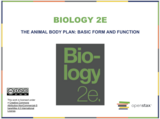
Elements in various combinations comprise all matter, including living things. Some of the most abundant elements in living organisms include carbon, hydrogen, nitrogen, oxygen, sulfur, and phosphorus. These form the nucleic acids, proteins, carbohydrates, and lipids that are the fundamental components of living matter. Biologists must understand these important building blocks and the unique structures of the atoms that comprise molecules, allowing for cells, tissues, organ systems, and entire organisms to form. All biological processes follow the laws of physics and chemistry, so in order to understand how biological systems work, it is important to understand the underlying physics and chemistry. For example, the flow of blood within the circulatory system follows the laws of physics that regulate the modes of fluid flow. The breakdown of the large, complex molecules of food into smaller molecules—and the conversion of these to release energy to be stored in adenosine triphosphate (ATP)—is a series of chemical reactions that follow chemical laws. The properties of water and the formation of hydrogen bonds are key to understanding living processes. Recognizing the properties of acids and bases is important, for example, to our understanding of the digestive process. Therefore, the fundamentals of physics and chemistry are important for gaining insight into biological processes.

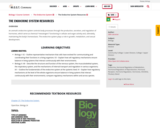
An animal’s endocrine system controls body processes through the production, secretion, and regulation of hormones, which serve as chemical “messengers” functioning in cellular and organ activity and, ultimately, maintaining the body’s homeostasis. The endocrine system plays a role in growth, metabolism, and sexual development.

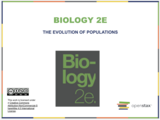
People did not understand the mechanisms of inheritance, or genetics, at the time Charles Darwin and Alfred Russel Wallace were developing their idea of natural selection. Scholars rediscovered Mendel’s work in the early twentieth century, and over the next few decades scientists integrated genetics and evolution in what became known as the modern synthesis—the coherent understanding of the relationship between natural selection and genetics that took shape by the 1940s. Natural selection can affect a population’s genetic makeup, and, in turn, this can result in the gradual evolution of populations. In the early twentieth century, biologists in the area of population genetics began to study how selective forces change a population through changes in allele and genotypic frequencies. Adaptive evolution is the process by which natural selection increases the frequency of beneficial alleles in the population, while decreasing the frequency of deleterious alleles.

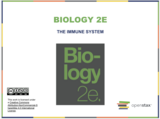
The environment consists of numerous pathogens, usually microorganisms, that cause disease in their hosts. Components of the immune system constantly search the body for signs of these pathogens. Mammalian immune systems evolved for protection from such pathogens. These systems are composed of an extremely diverse array of specialized cells and soluble molecules that coordinate a rapid and flexible defense system.

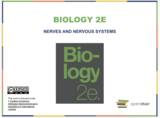
A nervous system is an organism’s control center. It processes sensory information from outside and inside the body and controls all behaviors, from fundamental to complex. Although nervous systems throughout the animal kingdom vary in structure and complexity, each functions to maintain homeostasis.

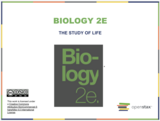
Viewed from space, Earth offers no clues about the diversity of life forms that reside there. Scientists believe that the first forms of life on Earth were microorganisms that existed for billions of years in the ocean before plants and animals appeared. The mammals, birds, and flowers so familiar to us are all relatively recent, originating 130 to 250 million years ago. The earliest representatives of the genus Homo, to which we belong, have inhabited this planet for only the last 2.5 million years, and only in the last 300,000 years have humans started looking like we do today. The study of life is a vast field that delves into the past, present, and future. This module will provide an introduction into the science of Biology as well as a look into its major themes and concepts.

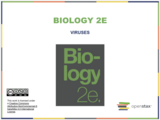
This chapter begins with the evolution of viruses, viral morphology and classification. Steps in viral infection are covered along with various host and virus types. Prevention and treatment of viruses is outlined in this chapter. Finally prions and viroids are covered at the conclusion of the chapter.
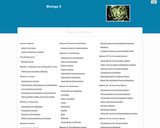
This template course was developed from generally available open educational resources (OER) in use at multiple institutions, drawing mostly from a primary work published by OpenStax College Concepts of Biology, but also including additional open works from various sources as noted in attributions on each page of materials.
- Subject:
- Biology
- Life Science
- Material Type:
- Full Course
- Textbook
- Provider:
- Lumen Learning
- Provider Set:
- Candela Courseware
- Date Added:
- 05/22/2019

The Biology II Course was developed through the Ohio Department of Higher Education OER Innovation Grant. The course is part of the Ohio Transfer Assurance Guides and is also named OSC004. This work was completed and the course was posted in October 2019. For more information about credit transfer between Ohio colleges and universities, please visit: www.ohiohighered.org/transfer.Team LeadCathy Sistilli Eastern Gateway Community CollegeContent ContributorsLisa Aschemeier Northwest State Community CollegeShaun Blevins Rhodes State CollegeRachel Detraz Edison State Community College Sara Finch Sinclair Community CollegeWendy Gagliano Clark State Community College AJ Snow University of Akron Wayne CollegeLibrarianAmanda Rinehart Ohio State UniversityReview TeamJessica Hall Ohio Dominican UniversitySanhita Gupta Kent State UniversityErica Mersfelder Sinclair Community College
- Subject:
- Biology
- Life Science
- Material Type:
- Full Course
- Provider:
- Ohio Open Ed Collaborative
- Date Added:
- 07/26/2021


All living organisms need nutrients to survive. While plants can obtain the molecules required for cellular function through the process of photosynthesis, most animals obtain their nutrients by the consumption of other organisms. At the cellular level, the biological molecules necessary for animal function are amino acids, lipid molecules, nucleotides, and simple sugars. However, the food consumed consists of protein, fat, and complex carbohydrates. Animals must convert these macromolecules into the simple molecules required for maintaining cellular functions, such as assembling new molecules, cells, and tissues. The conversion of the food consumed to the nutrients required is a multistep process involving digestion and absorption. This module will explore these ideas as well as the components of various digestive systems found in the animal kingdom.


Animal reproduction is necessary for the survival of a species. In the animal kingdom, there are innumerable ways that species reproduce. Asexual reproduction produces genetically identical organisms (clones), whereas in sexual reproduction, the genetic material of two individuals combines to produce offspring that are genetically different from their parents. During sexual reproduction the male gamete (sperm) may be placed inside the female’s body for internal fertilization, or the sperm and eggs may be released into the environment for external fertilization.